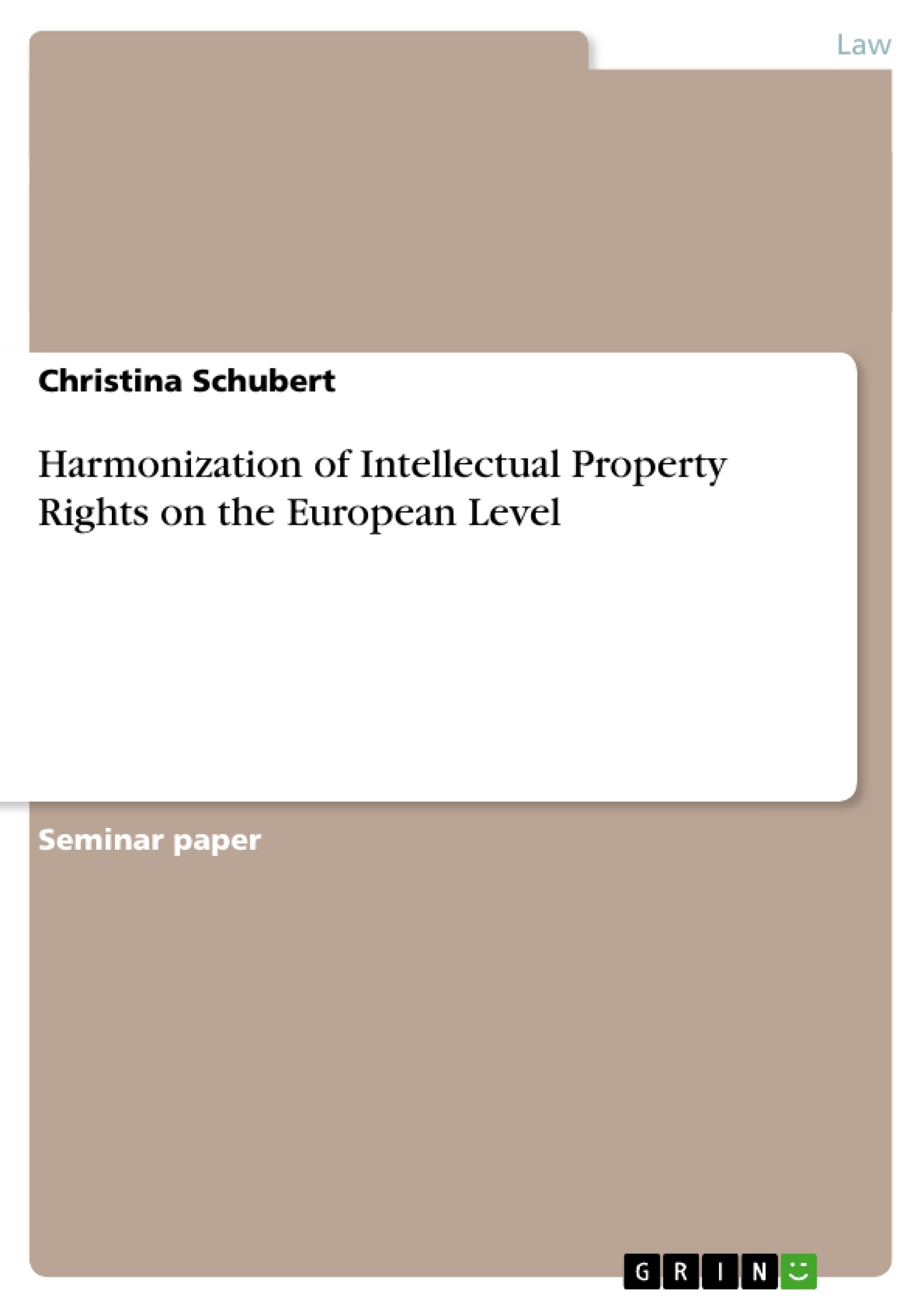This descriptive assignment will give a comprehensive overview of IP-law in Europe. It will mainly focus on the question in how far the EU reached a harmonisation of national IP-law in the main fields of industrial property rights as well as copyrights. In the beginning a short introduction of the historical development of IPRs and the legal framework in the EU will be given. The conclusion will revise the critical points.
Inhaltsverzeichnis (Table of Contents)
- Introduction – Intellectual property rights on the European level
- Historical overview of the development of IPRs
- IPR legal framework in the European Union
- Industrial Property Rights
- Patents and related rights
- Design Patents
- Trademark and related rights
- Copyrights and related rights
- Conclusion: Is there a Common European IP-law?
Zielsetzung und Themenschwerpunkte (Objectives and Key Themes)
This assignment provides a comprehensive overview of intellectual property law in Europe. It primarily focuses on the extent to which the European Union has achieved harmonization of national IP law in the major areas of industrial property rights and copyrights. The assignment begins with a brief introduction to the historical development of intellectual property rights and the legal framework in the European Union. The conclusion will examine the critical points. Key themes or main ideas include:- Harmonization of intellectual property rights (IPRs) on the European level
- Historical development of IPRs, including international agreements like the Paris and Berne Conventions
- EU's role in shaping international IPR standards through institutions like the World Intellectual Property Organization (WIPO)
- Legal framework of IPRs in the EU, including the role of the Amsterdam Treaty and various EU directives and regulations
- Challenges posed by counterfeiting and piracy to the EU's internal market and economy
Zusammenfassung der Kapitel (Chapter Summaries)
Introduction - Intellectual property rights on the European level
This chapter introduces the concept of intellectual property rights (IPRs) and their significance for innovation and competitiveness in the EU. It highlights the territorial nature of IPRs and the challenges posed by differing national IP laws to the free movement of goods within the European single market. The chapter also emphasizes the need for a harmonized IP law framework and the EU's efforts to achieve this through regulations and directives.Historical overview of the development of IPRs
This chapter traces the historical development of IPRs, starting with the 19th century's attempt to standardize IPRs through international agreements. It discusses the significance of the Paris Convention for the Protection of Industrial Property (1883) and the Berne Convention (1886) in protecting industrial property rights and copyrights, respectively. The chapter also mentions the establishment of the World Intellectual Property Organization (WIPO) and its role in coordinating international IP law.IPR legal framework in the European Union
This chapter outlines the legal framework for IPRs within the EU, highlighting the role of the Amsterdam Treaty and the EU's various directives and regulations. It discusses the EU's efforts to harmonize national IP laws and its involvement in shaping international IP standards through institutions like the WIPO and the Anti-Counterfeiting Trade Agreement (ACTA).Industrial Property Rights
This chapter examines the key aspects of industrial property rights within the EU, including patents, design patents, and trademarks. It highlights the need for registration of these rights in each EU state.Copyrights and related rights
This chapter discusses the protection afforded to copyrights and related rights in the EU. It emphasizes the automatic nature of copyright protection and explores the various types of works protected, including literary and artistic works, music, software, and multimedia products.Schlüsselwörter (Keywords)
This preview examines intellectual property rights (IPRs), focusing on the harmonization of national IP laws in the European Union. It analyzes the historical development of IPRs, the EU's legal framework for IPRs, and the challenges posed by counterfeiting and piracy. Key terms include intellectual property rights, harmonization, European Union, industrial property rights, copyrights, patents, trademarks, design patents, counterfeiting, piracy, and international agreements like the Paris Convention, Berne Convention, TRIPS, and ACTA.
Final del extracto de 21 páginas
- subir
- Citar trabajo
- Christina Schubert (Autor), 2010, Harmonization of Intellectual Property Rights on the European Level, Múnich, GRIN Verlag, https://www.grin.com/document/152474
Leer eBook



